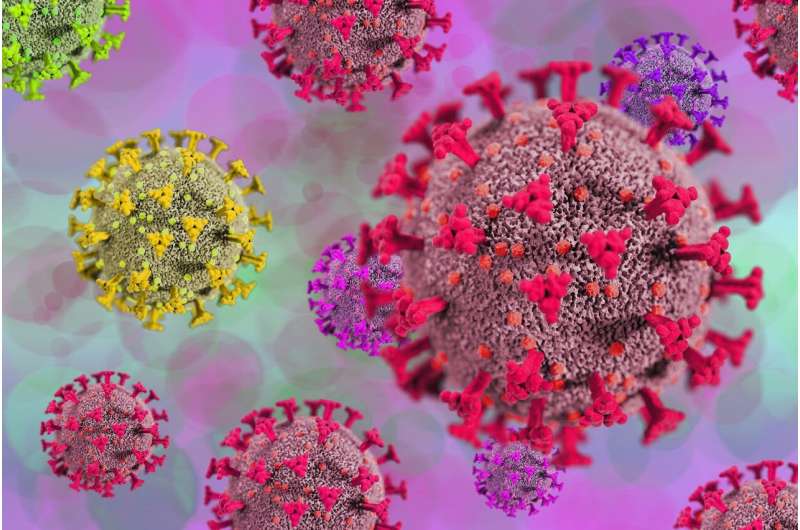
In a throwback to January 2020, when the novel coronavirus SARS-CoV-2 began to be detected outside of China, many countries have again adopted measures targeted at travelers from China. These measures include flight restrictions, pre-departure testing and blanket entry bans.
As of Jan. 5, 2023, air travelers from China, Hong Kong and Macau over two years of age entering Canada must provide proof of a negative COVID test prior to departure.
This latest round of travel measures is in response to a dramatic surge in new coronavirus infections in China.
Following widespread protests against the prolonged zero COVID policy in November 2022, the Chinese government dismantled its strictest COVID-19 rules with remarkable speed. This included permission for Chinese nationals, who were largely banned from traveling abroad during the pandemic, to leave the country as of Jan. 8.
The abrupt change in direction, combined with low population immunity, led to a spike in infections and deaths. This unfolding tragedy, amid limited transparency and data sharing by the Chinese government, is stoking fears worldwide of a potential new variant of concern.
Although governments have justified the measures as science-based, consensus on effective border management during this pandemic remains elusive. Chinese officials were swift to dismiss the new measures as politically motivated. This is difficult to dispute given that previous measures targeting select countries were ineffective in preventing introduction of globally circulating new variants such as Omicron.
Effective use of testing as a travel measure
Available evidence shows that testing combined with other measures can reduce SARS-CoV-2 introduction from a high- to a low-incidence setting, if applied early, universally and stringently.
Testing must be aligned with the evolving science about the accuracy of different tests and the incubation periods of different variants. Testing must also be appropriately combined with other proven measures, notably quarantine and contact tracing, to prevent onward transmission.
The introduction of pre-departure testing alone, for selected travelers arriving from targeted countries, will not advance these goals for several reasons. By the time a variant or subvariant is identified as concerning, the volume of human mobility worldwide means it will have already spread to other countries not targeted.
The two known omicron lineages driving the surge in infections among a low-immunity Chinese population—subvariants BA.5.2 and BF.7—are described as “known and… already circulating in other countries” during much of 2022.
Should a new variant emerge, targeted measures like those now being applied would still have limited preventive effect. This is because global patterns of travel mean passengers mix with large numbers of other people along their journeys, often transiting through several countries.
Moreover, reliance on a single 48-hour pre-departure testing window overlooks variable incubation periods, false negatives, or new exposures during the time window prior to departure.
Finally, it makes little sense to test selected incoming travelers to slow introductions while lifting public health measures and allowing uncontrolled domestic transmission.
How should travel measures be used now?
Following the uncoordinated and often chaotic use of travel measures worldwide, our research at the Pandemics and Borders Project identifies lessons for their use three years into the COVID-19 pandemic.
First, there is unlikely to be capacity or political will to test travelers universally and repeatedly to prevent the introduction of any new variant of concern. Instead, randomized testing of all travelers, with genomic sequencing of positive test results, would provide critical surveillance data points at a time when the virus is rapidly evolving and moving about through travel.
This should be supplemented with testing of wastewater from, for example, airplanes and cruise ships. Testing of travelers for population and sentinel surveillance would support early warning of new variants of concern.
Second, proven travel measures should be reframed as practices to enhance risk mitigation, enabling rather than restricting travel. Public health messaging should challenge populist-stoked narratives that, for example, wearing masks during a flight is a violation of individual liberty. Instead, appropriate use of testing, masking and vaccination enhances personal freedoms by creating a safer environment for all travelers.
Finally, travel measures should be applied in ways that enhance—rather than deter—data sharing. The use of targeted travel restrictions against southern African countries in 2021 did little to slow the omicron variant. The restrictions may have allowed politicians to reassure their constituents at home that something was being done but, in practice, reporting countries were simply punished for alerting the world to an already globally circulating variant.
Similarly, insufficient data sharing is currently cited as a key reason for travel measures targeting Chinese travelers. Rather than complying, however, the Chinese government has begun to retaliate by restricting short term visas for travelers from South Korea and Japan.
With the virus continuing to change and circulate globally in the foreseeable future, governments would do well not to repeat past mistakes. Instead they should seek ways to improve how decisions are made on the use of travel measures during the current and future public health emergencies.
Provided by
The Conversation
This article is republished from The Conversation under a Creative Commons license. Read the original article.
Source: Read Full Article





